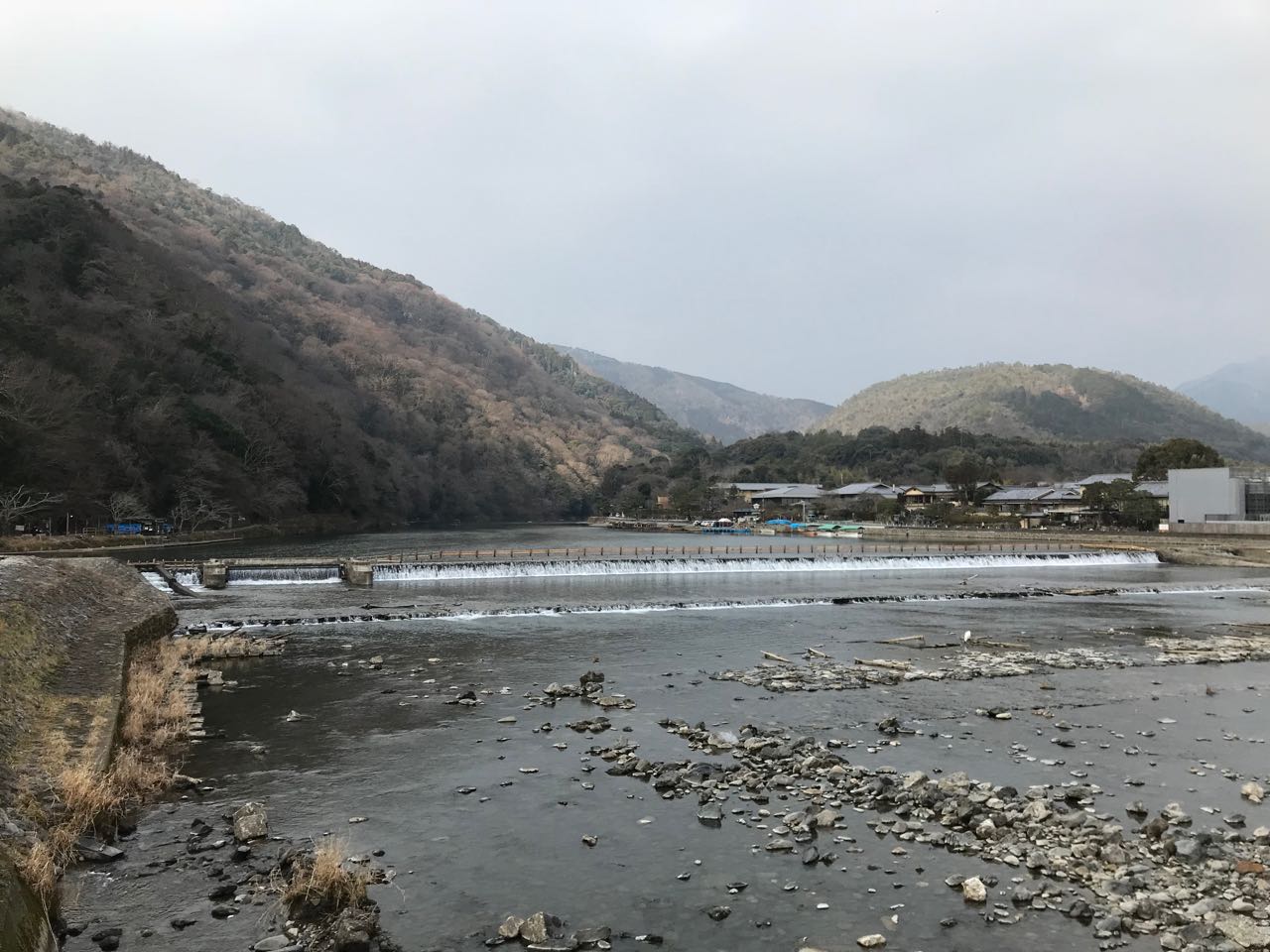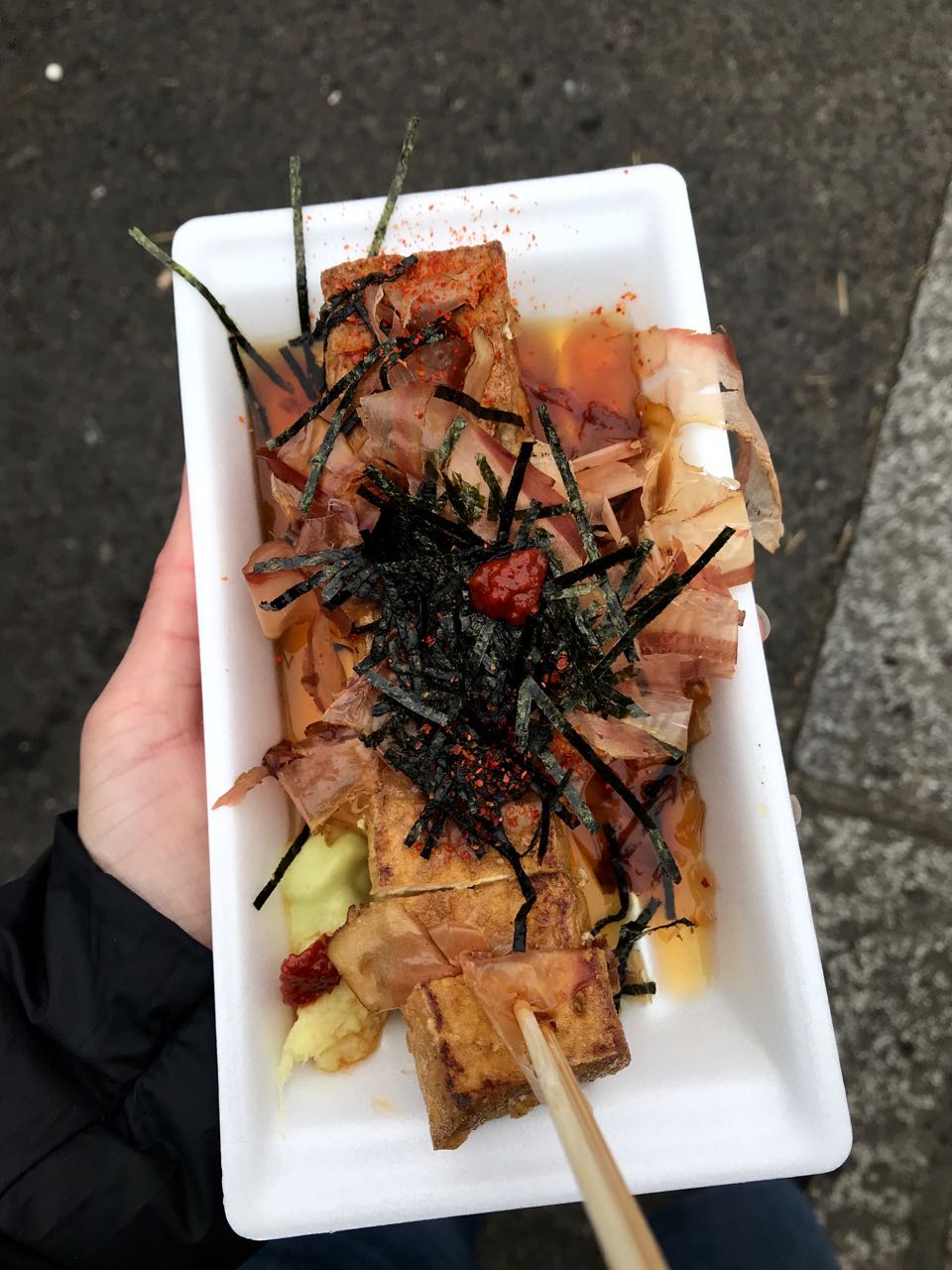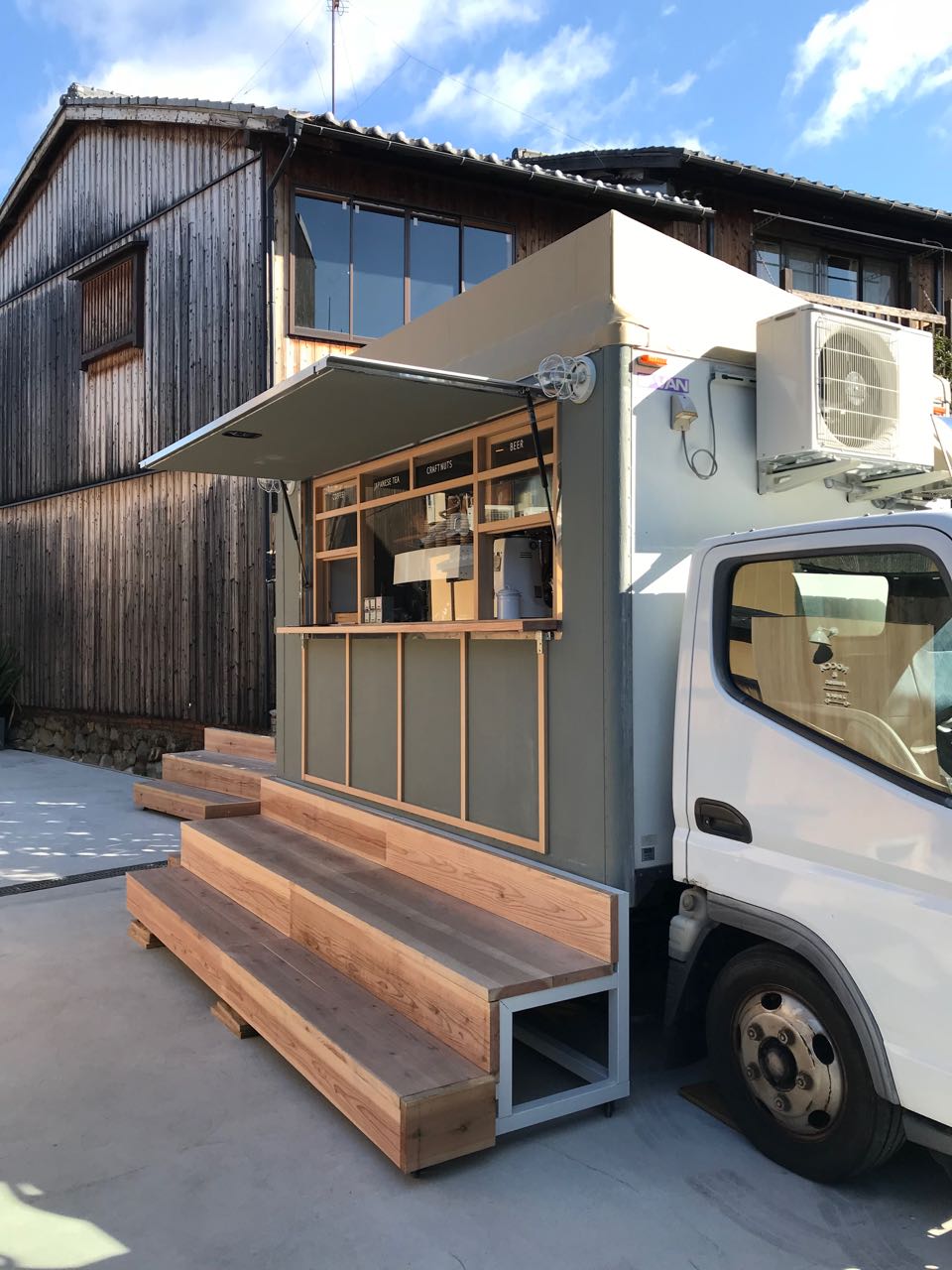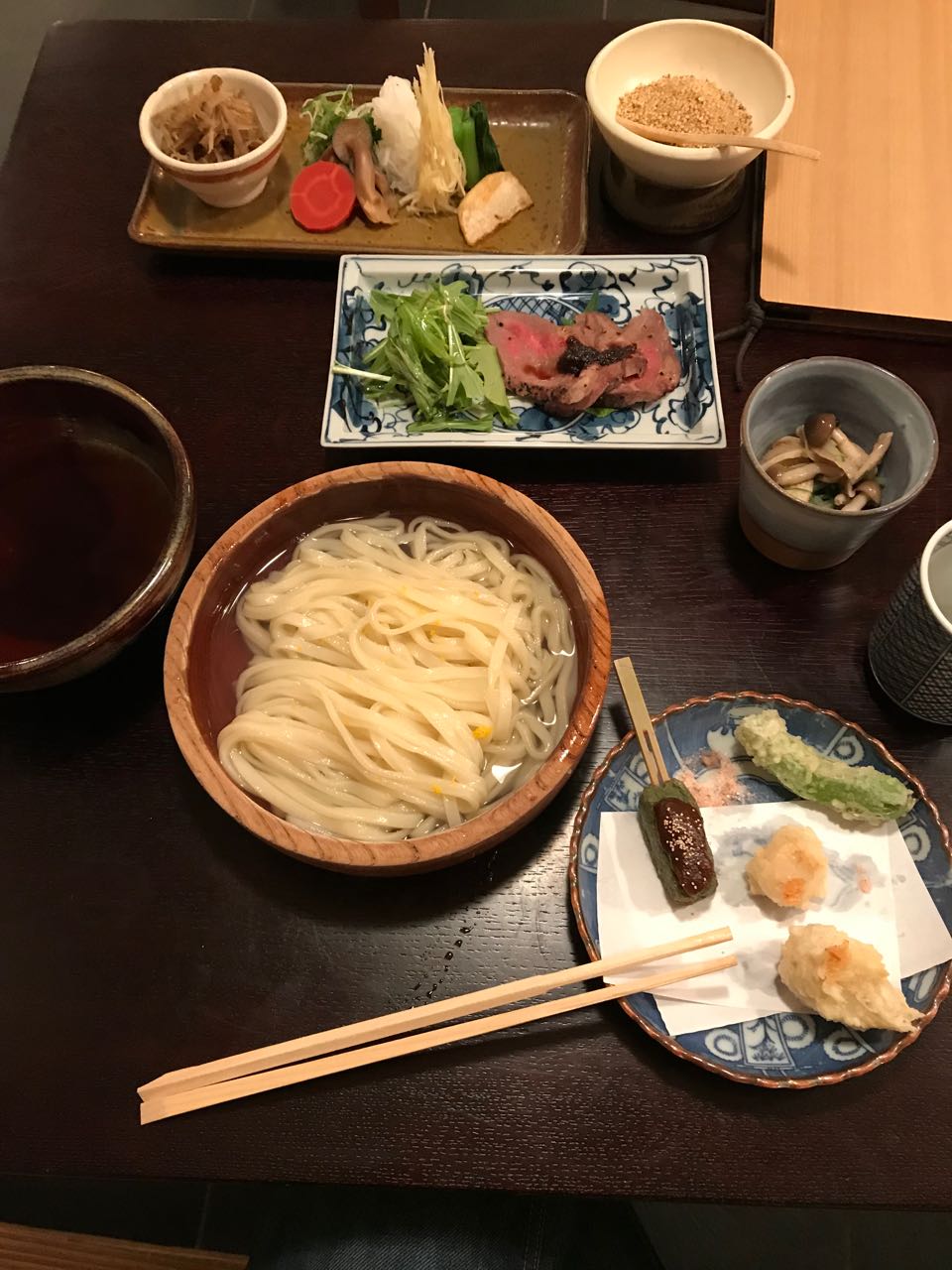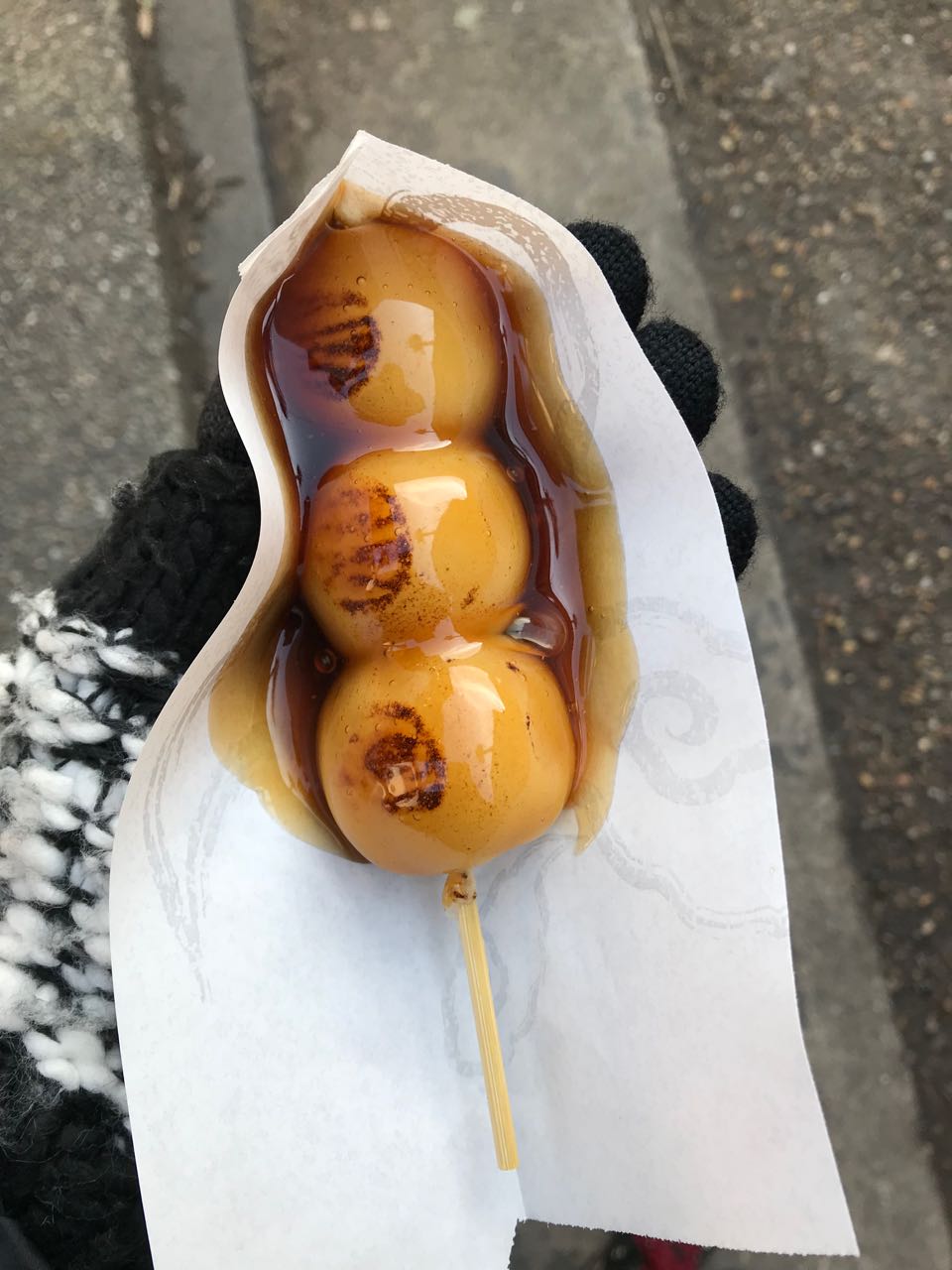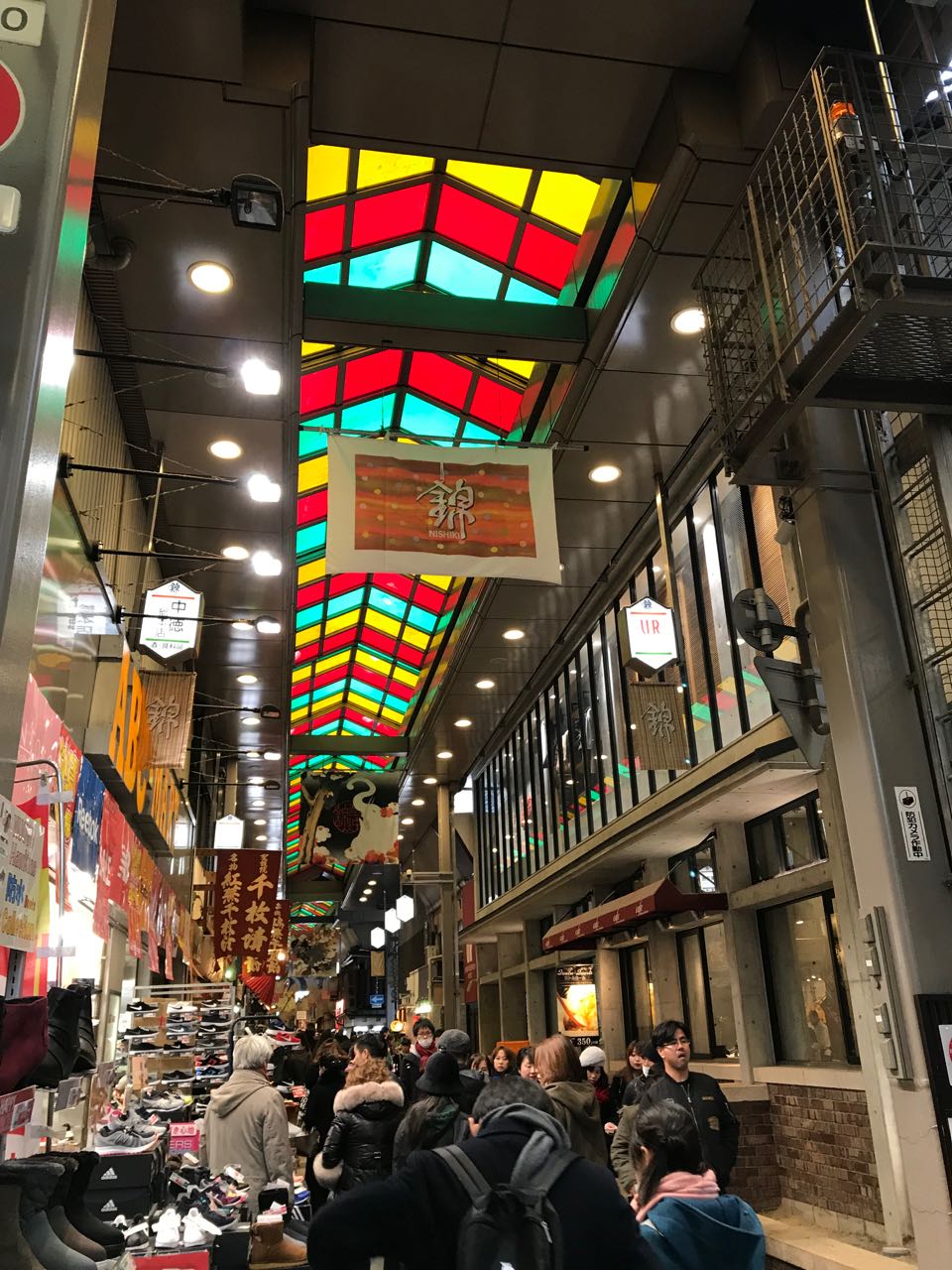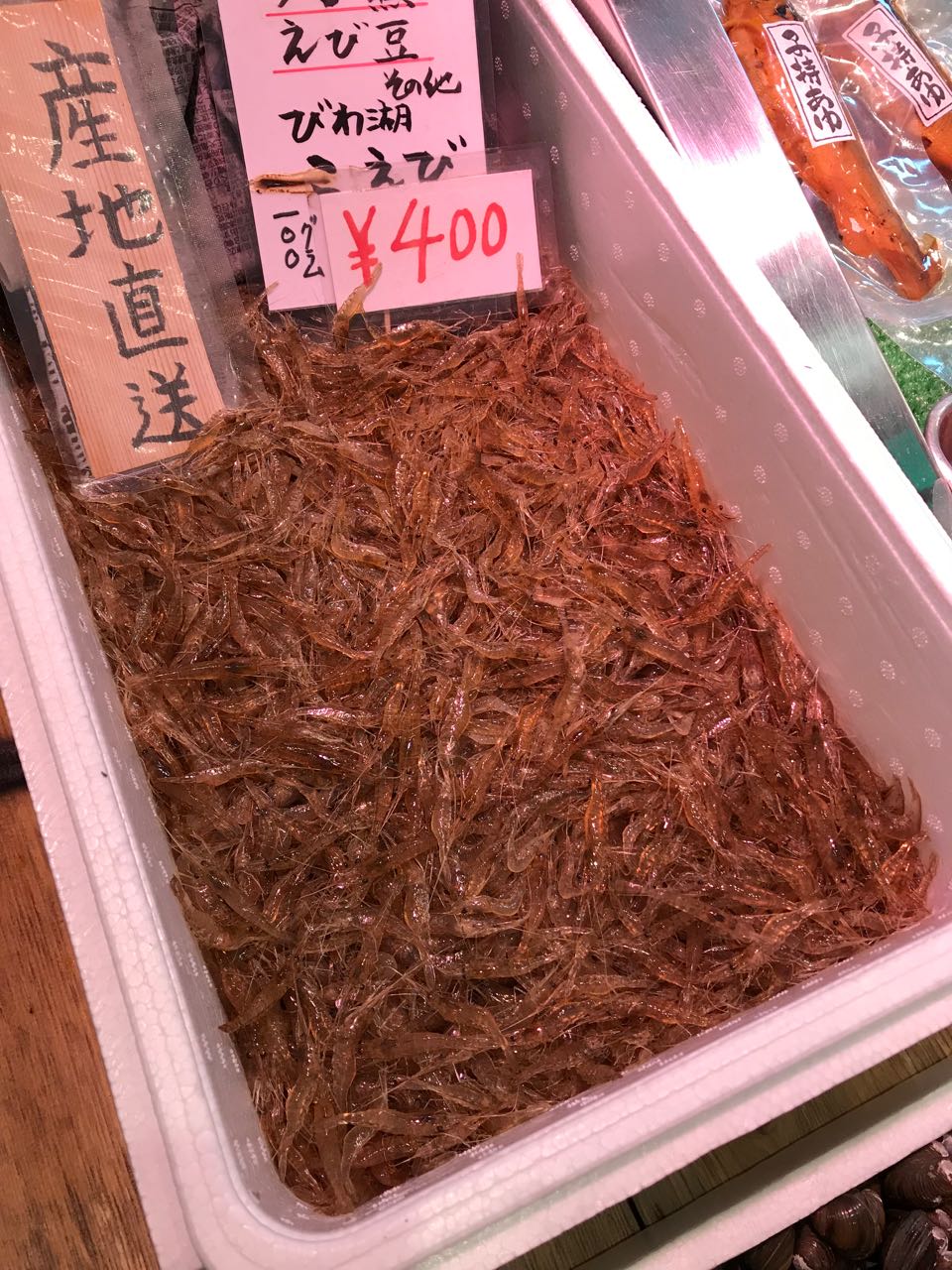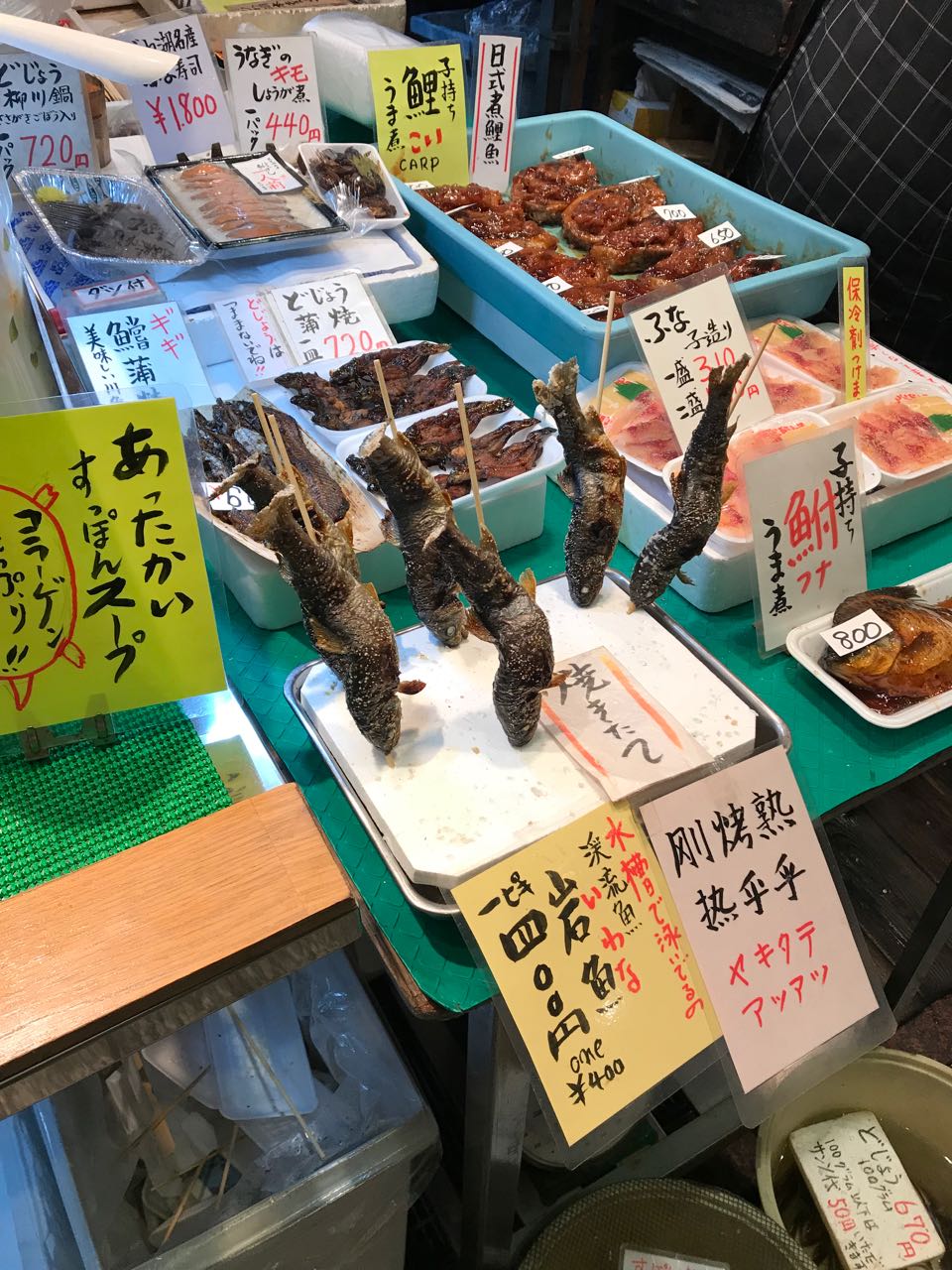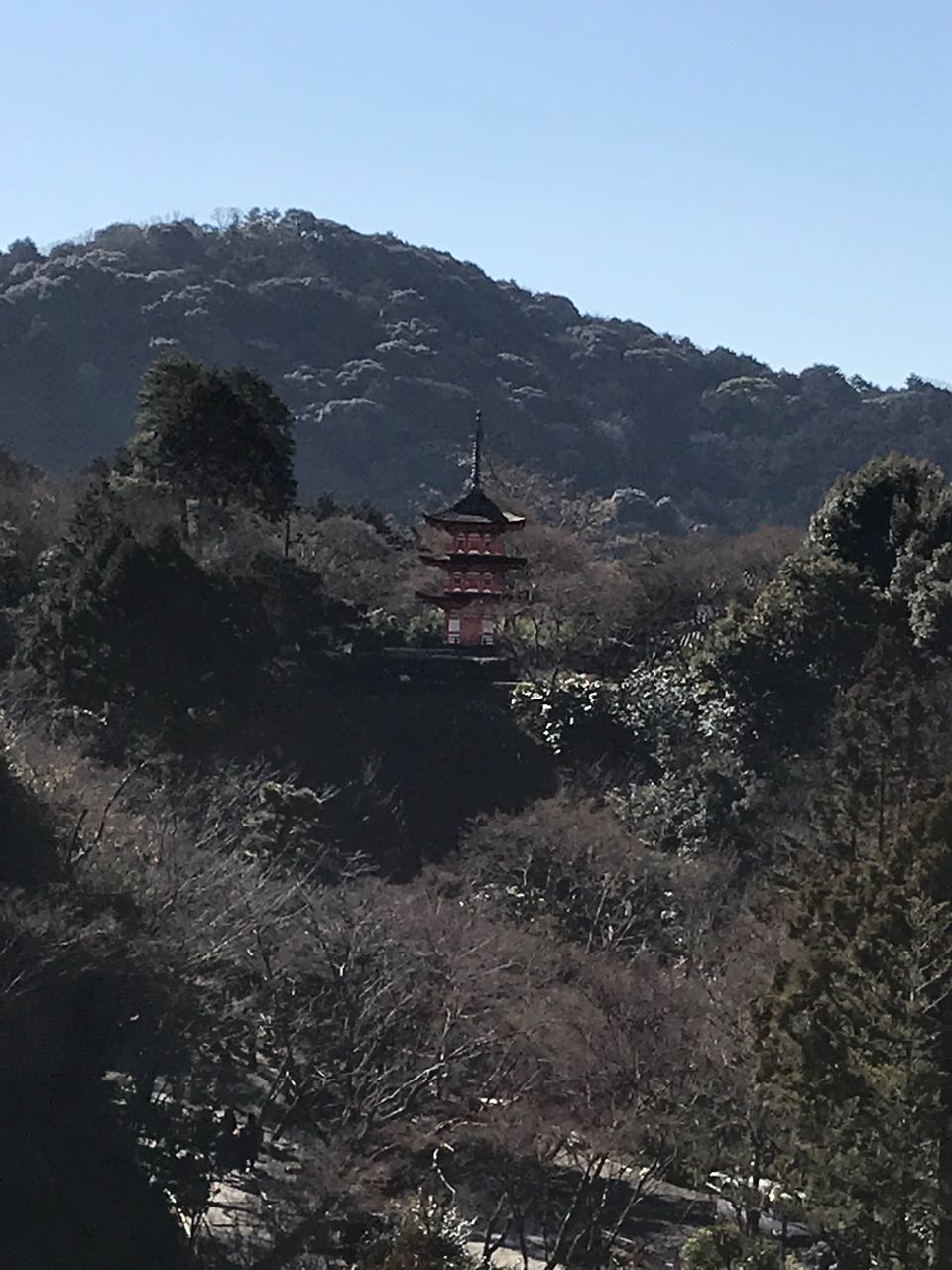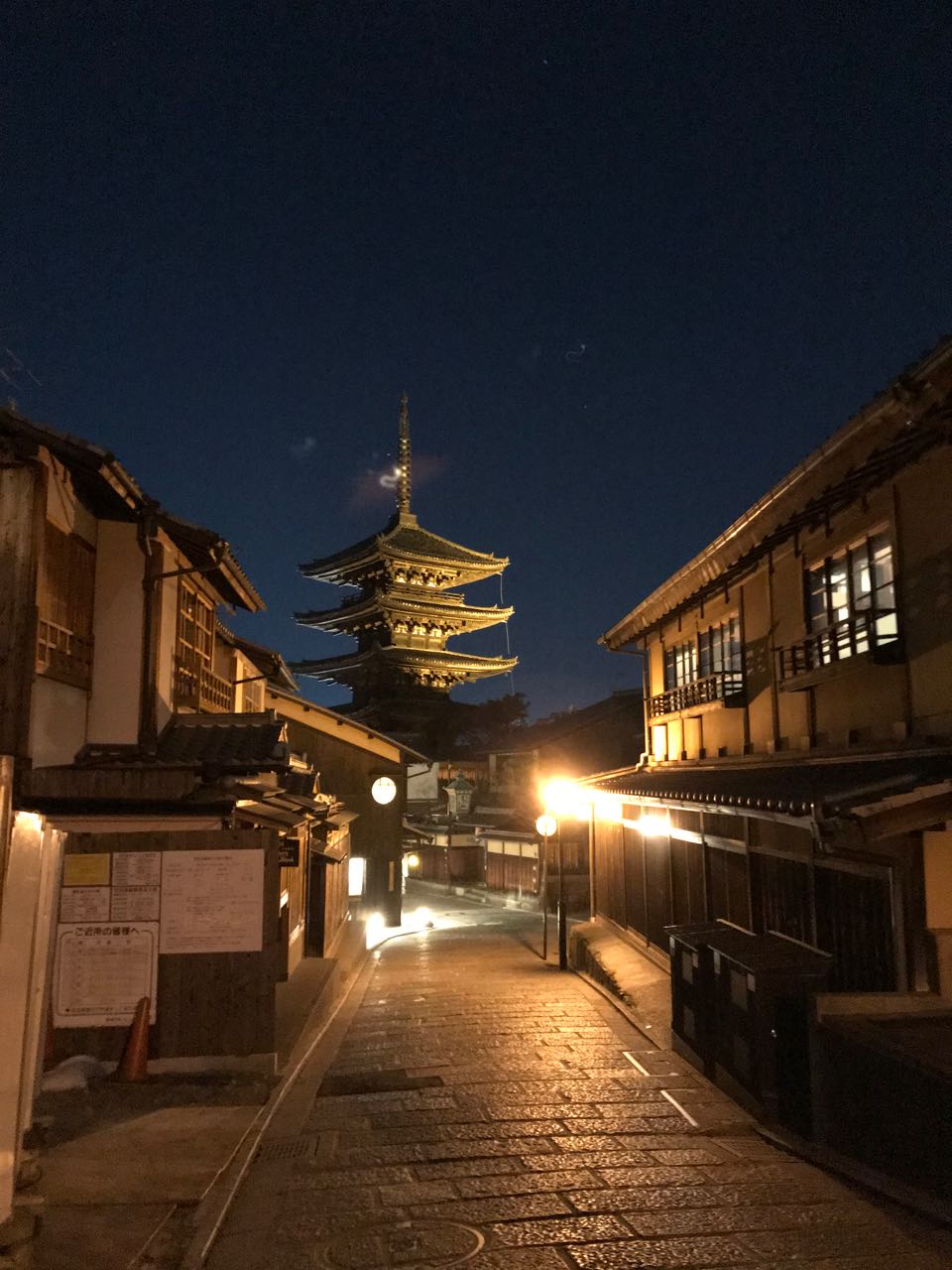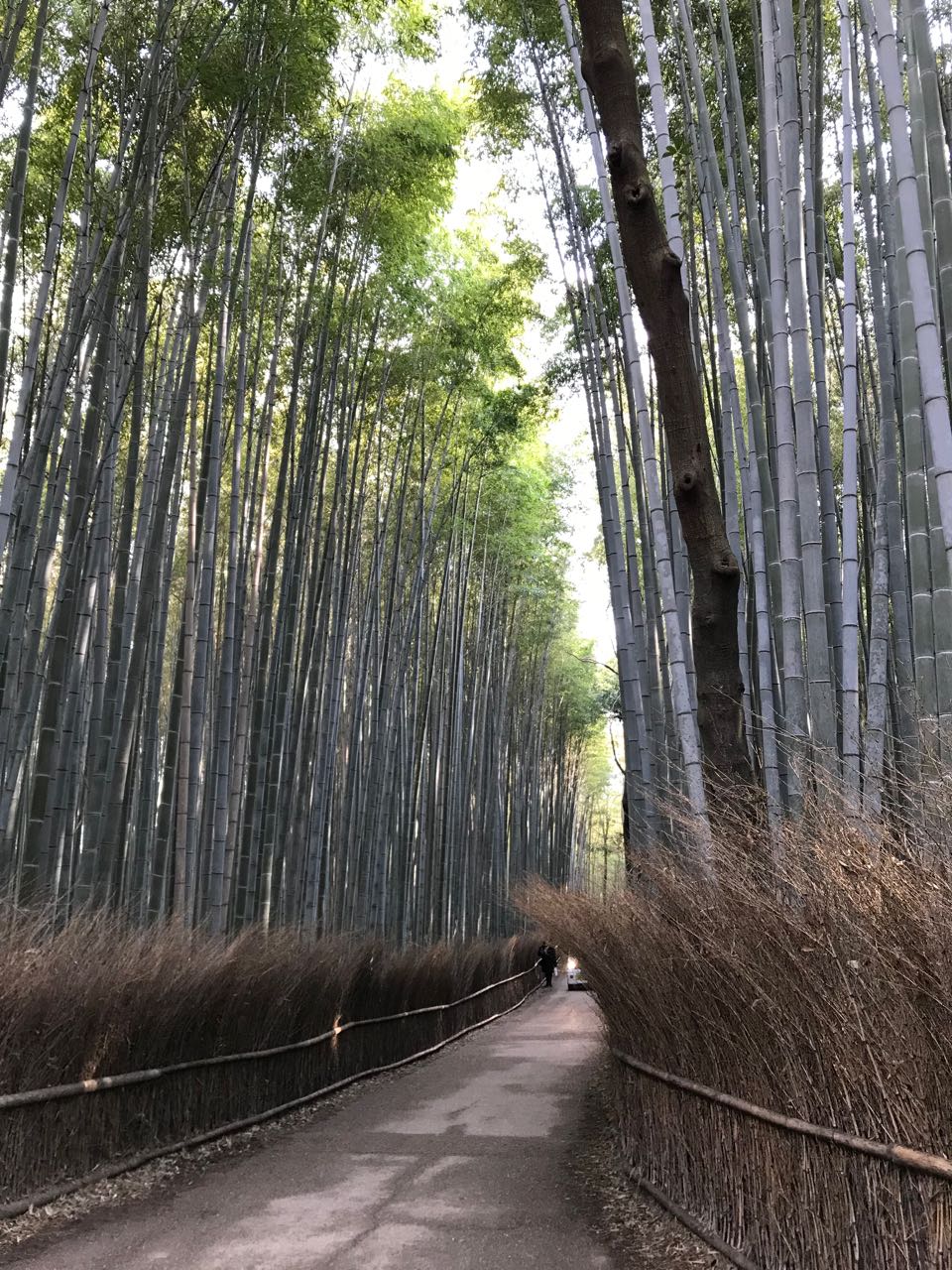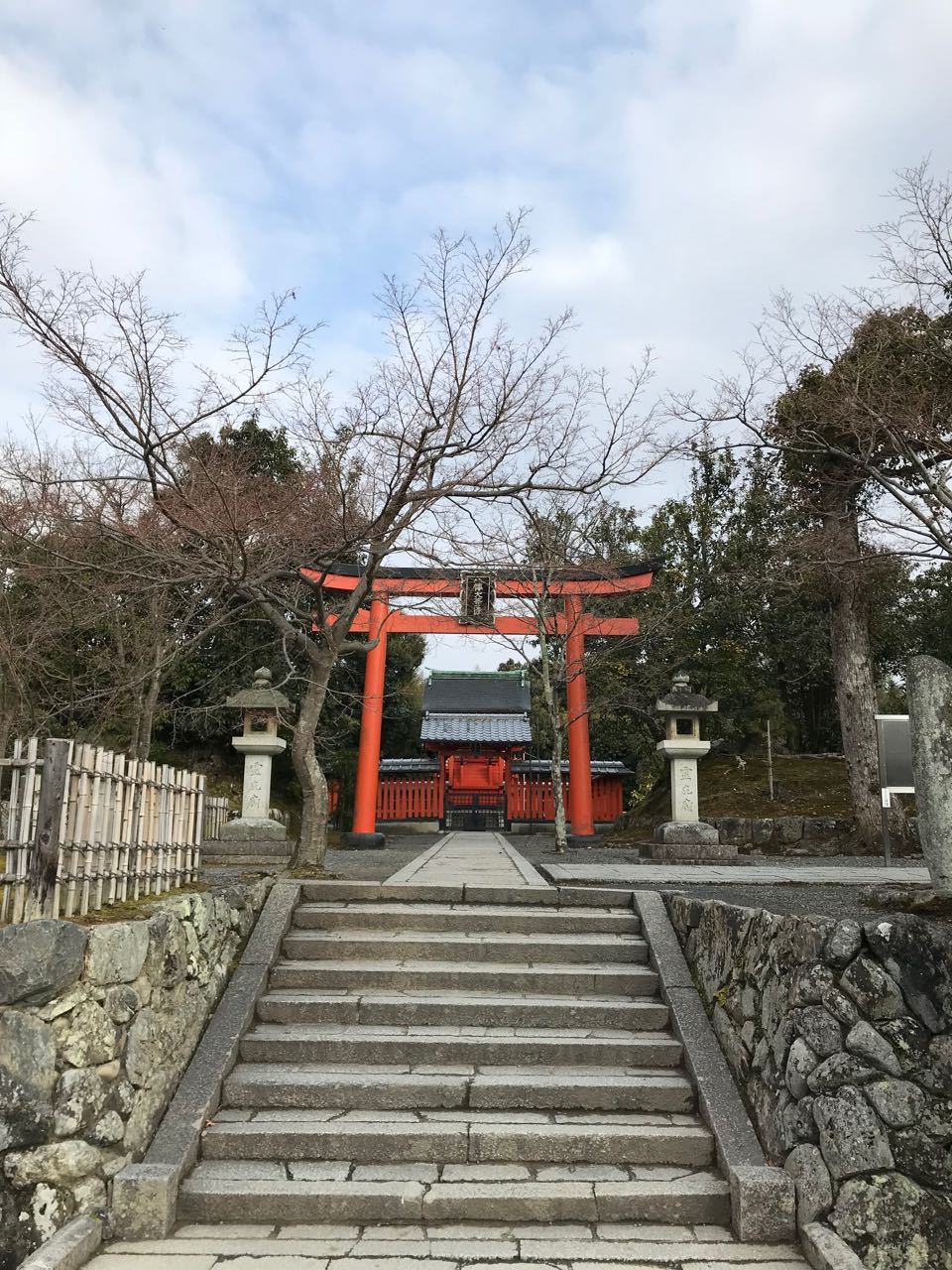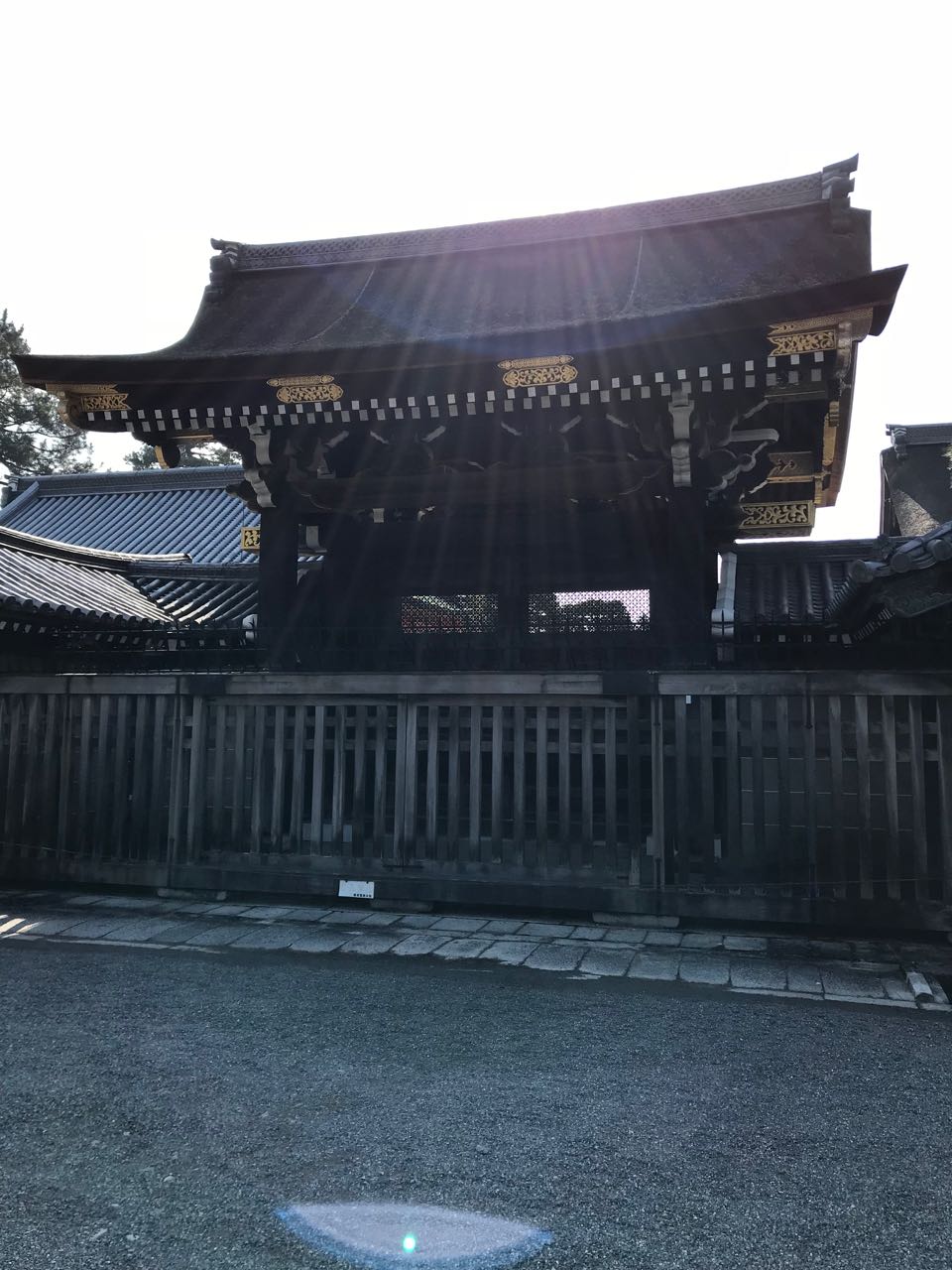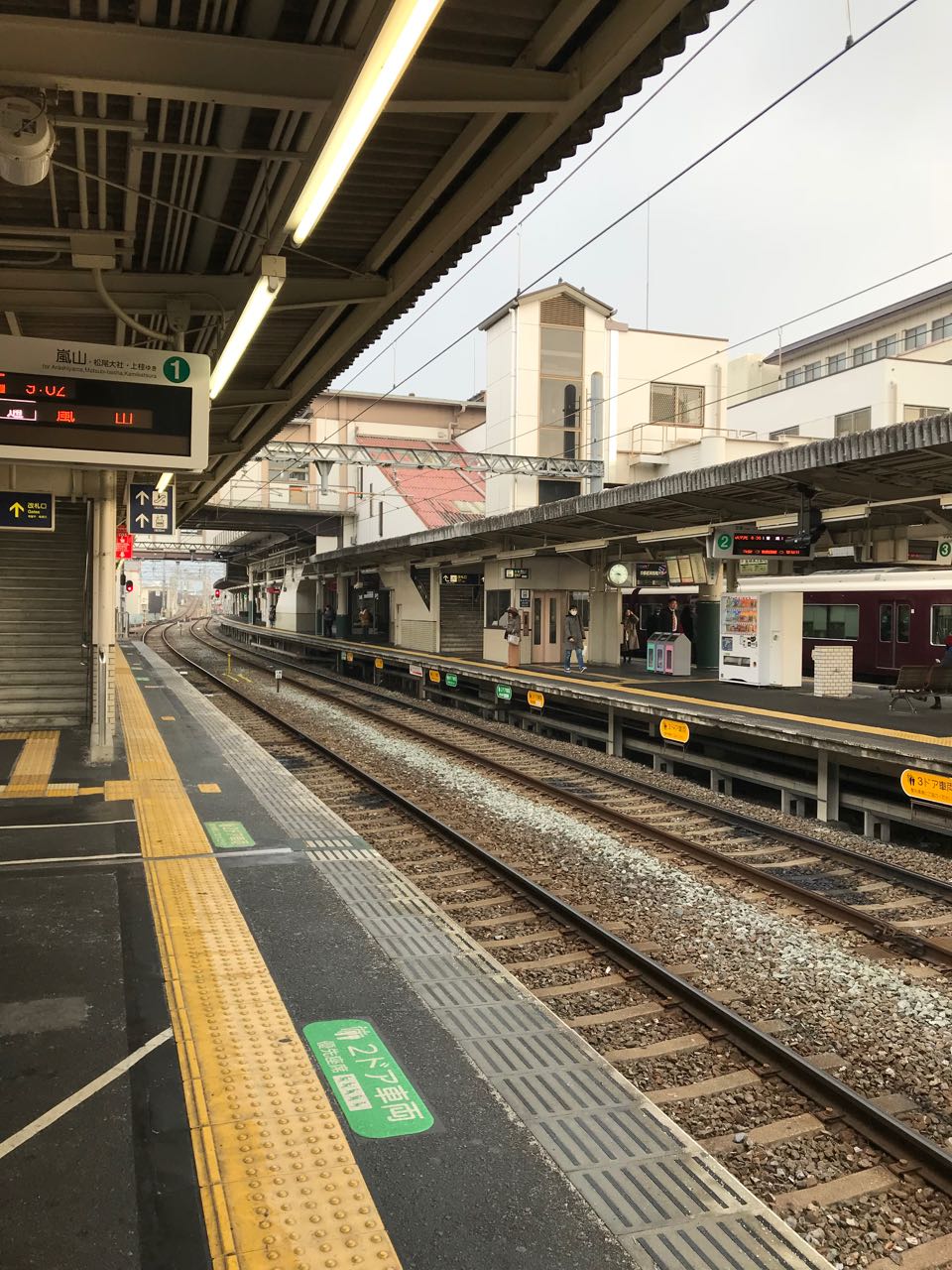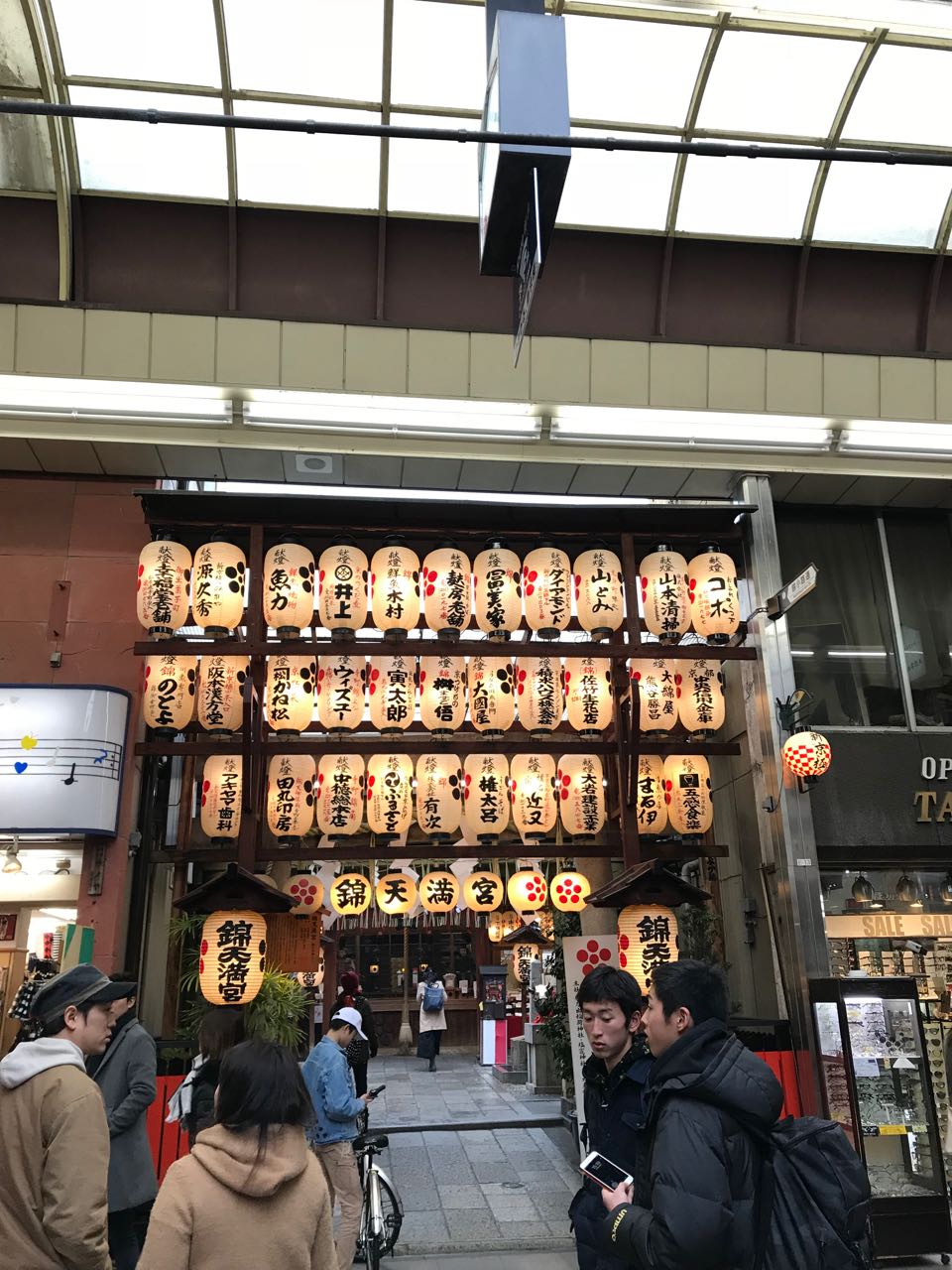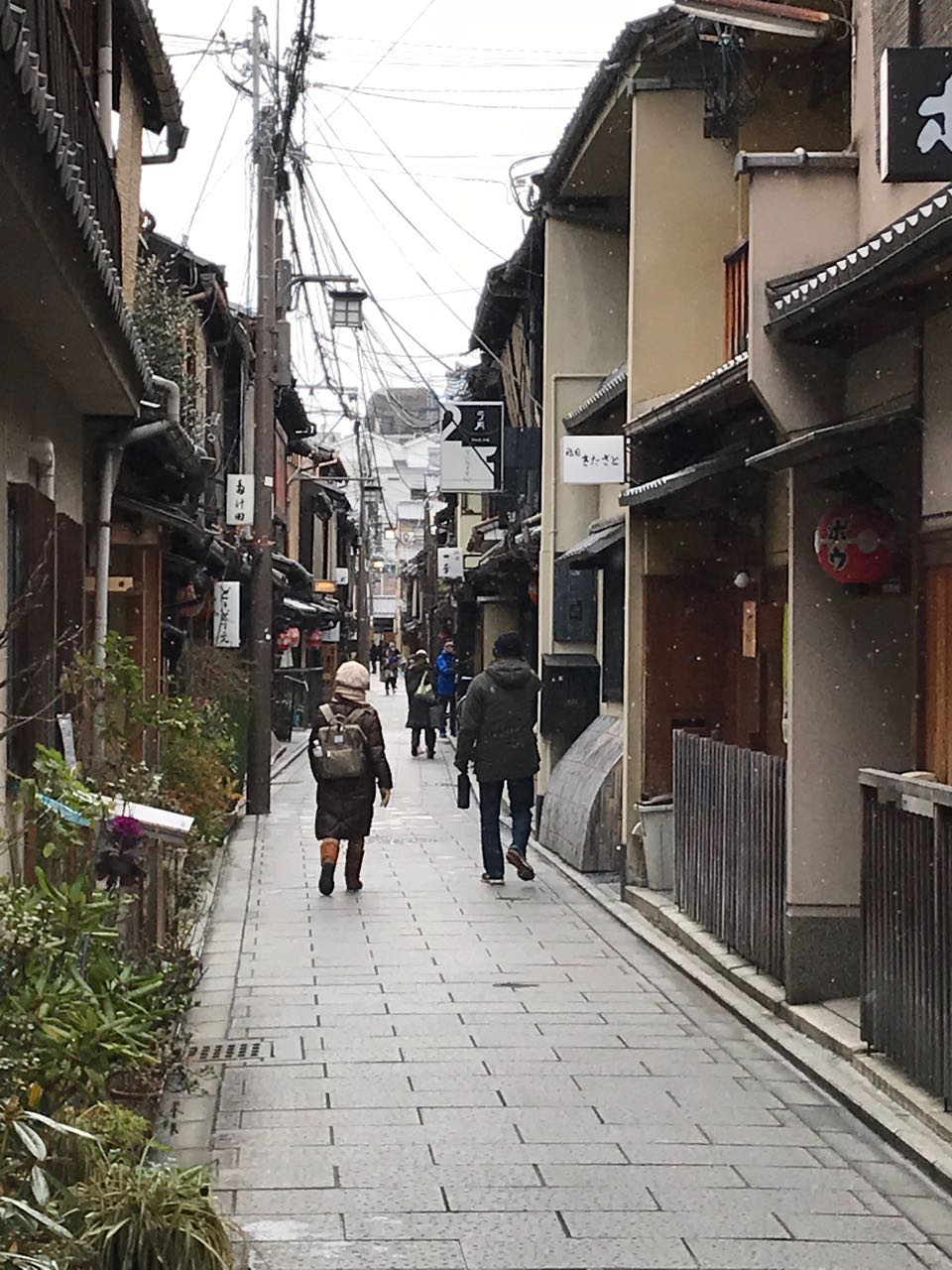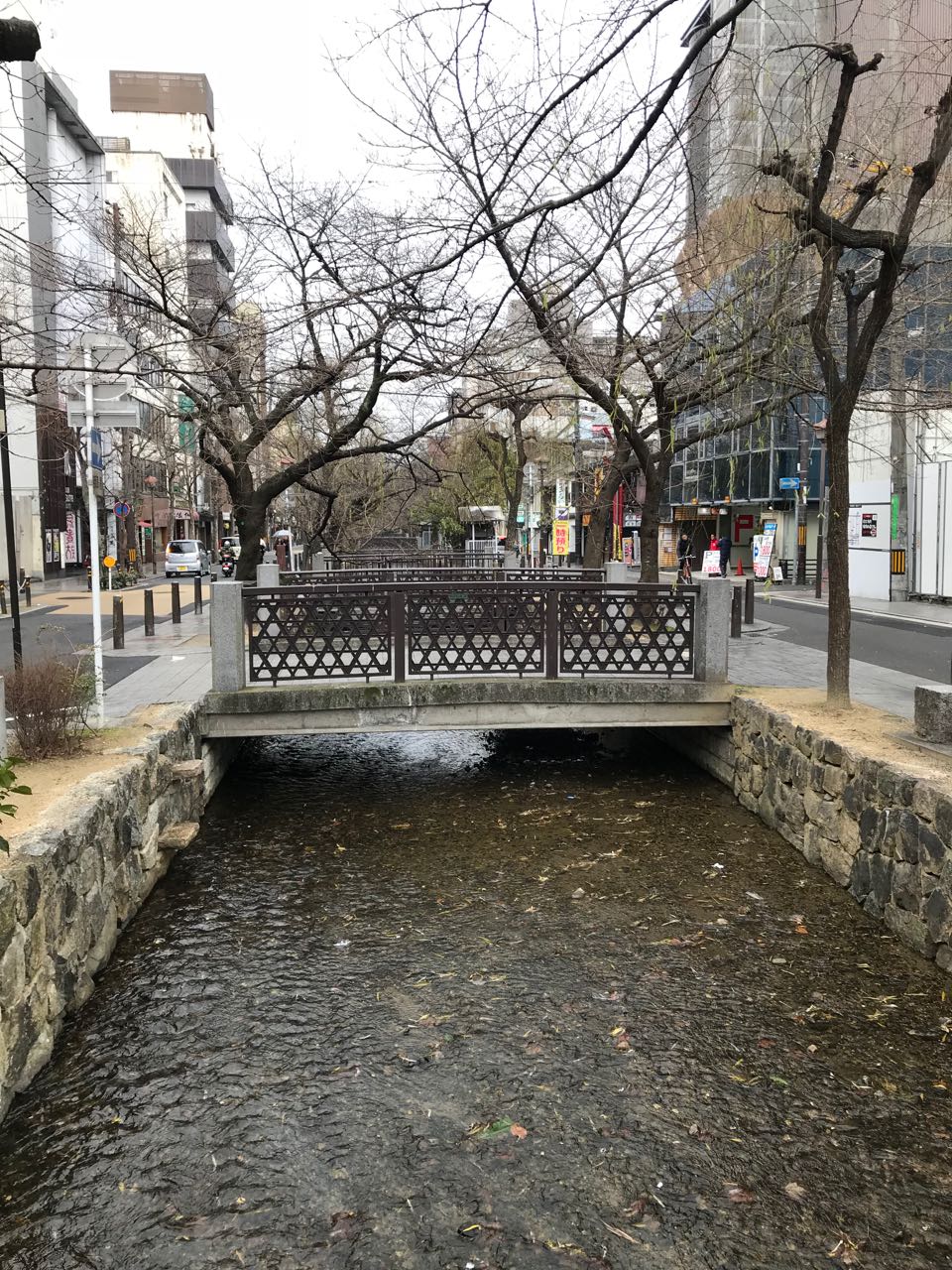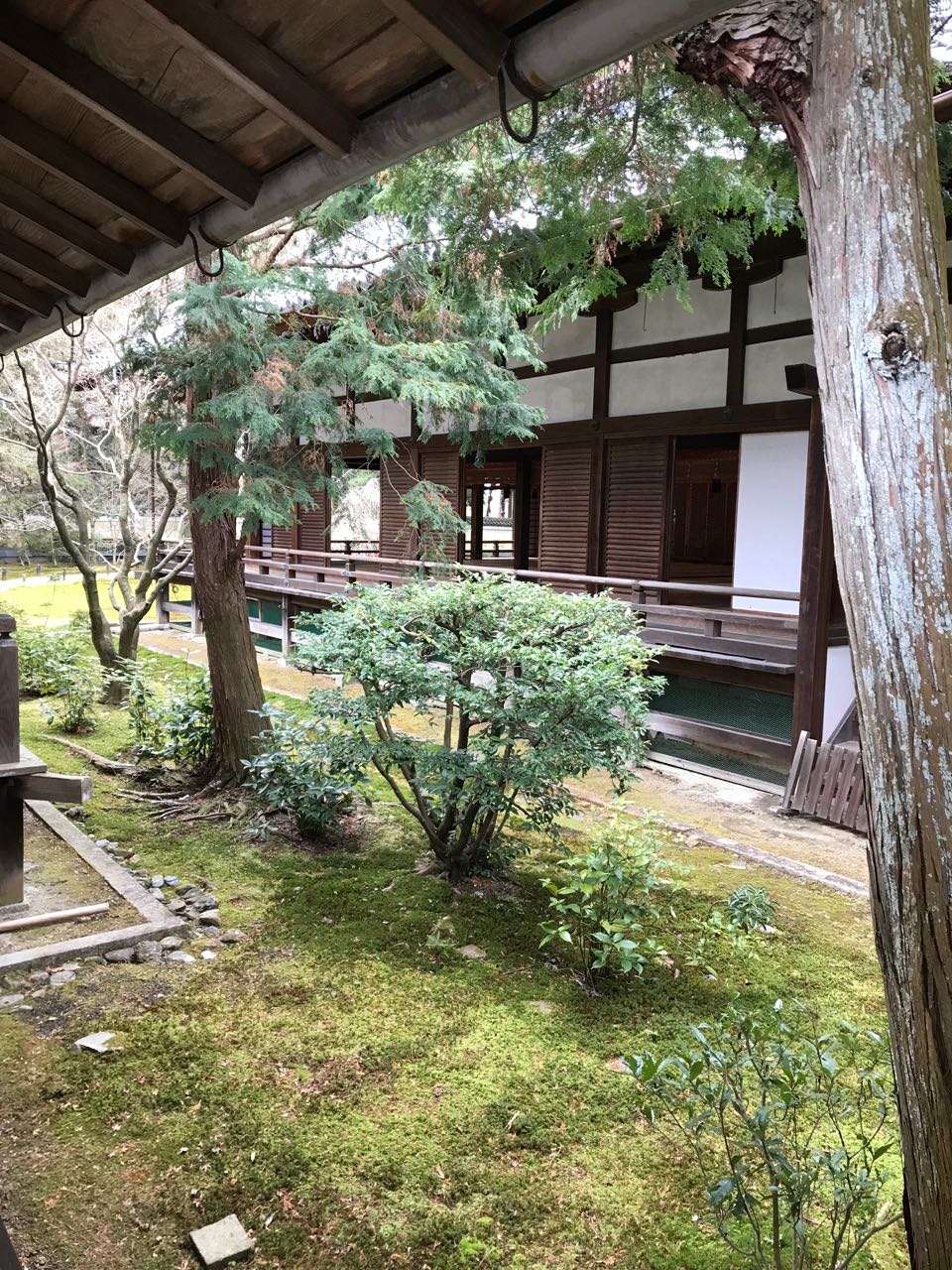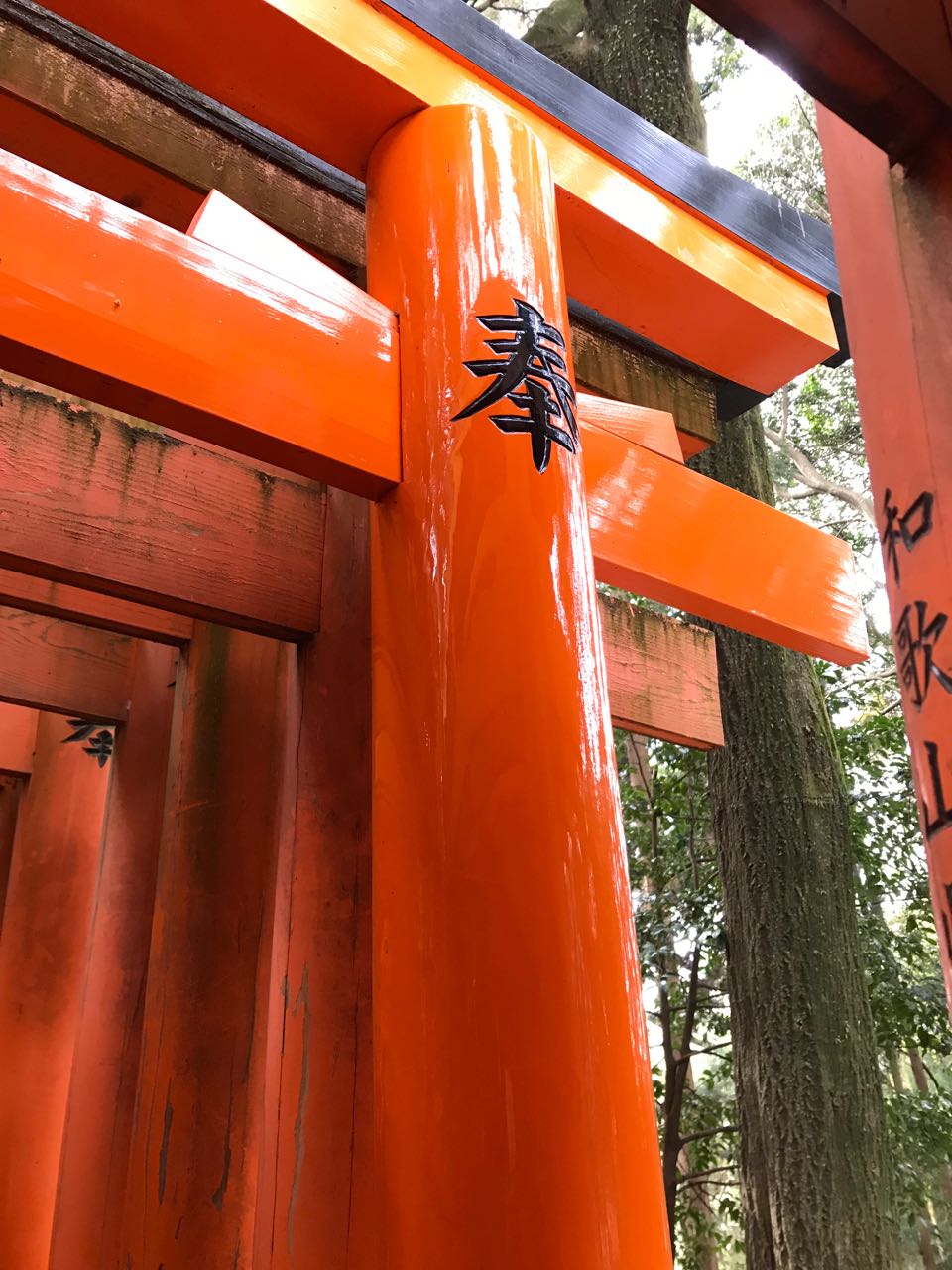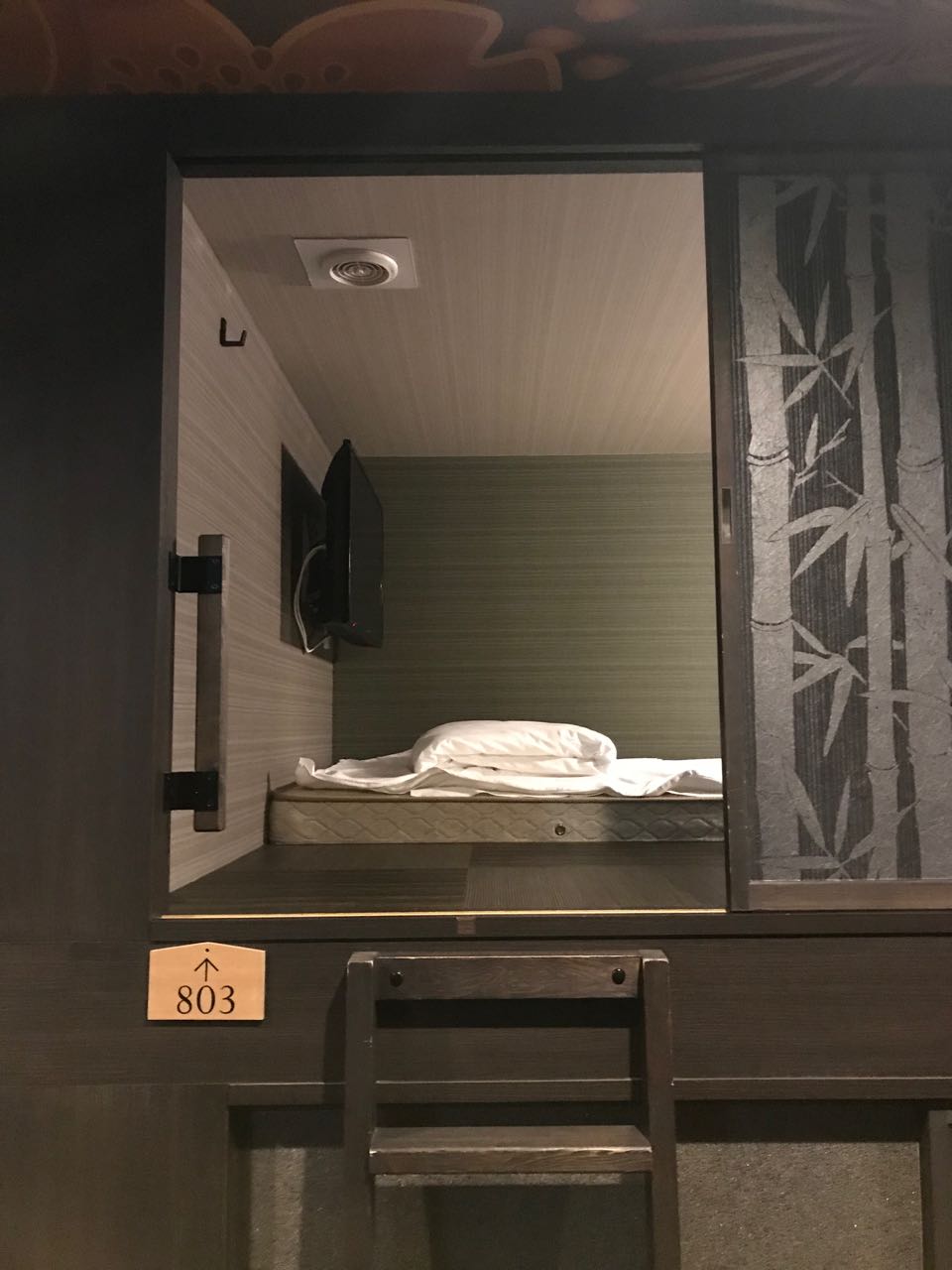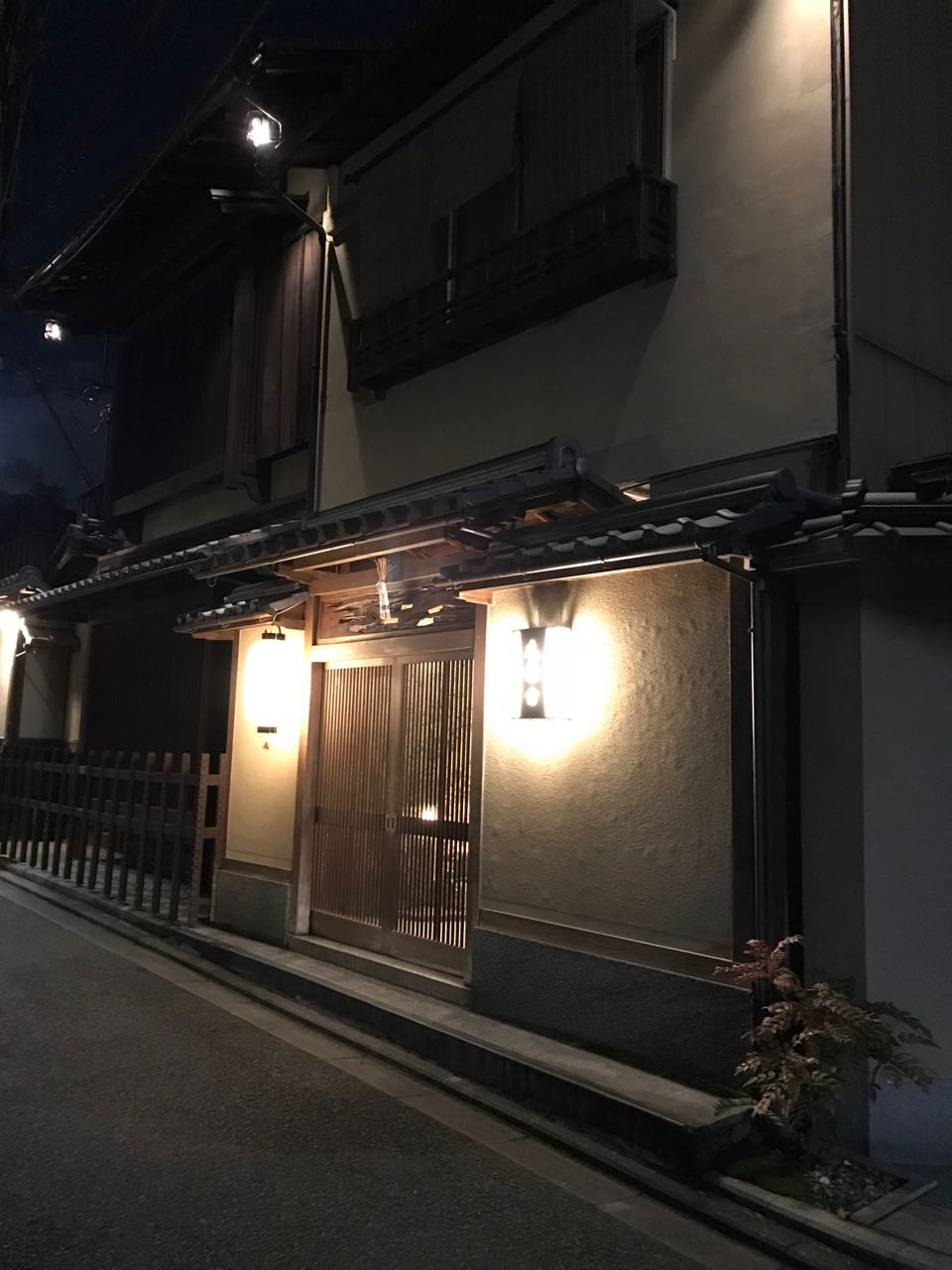#fbf to Japan today! I wrote about my overall trip last week and some helpful tips I learned along the way, but now we can talk about the important things, like what to eat! And see and do and where to stay, but mostly, what to eat because this is Japan and they've been showing the world what to do with food for centuries.
Where to Eat in Kyoto
During my three days in Kyoto, I tried a wide range of foods, from udon to grilled mochi balls to tofu steak. It was all fantastic and I'm pretty sure you can't find a bad meal there (well, maybe I found one).
Nishiki Market
This covered market has tons of food stalls and little shops, selling anything from pickled vegetables to live tiny shrimp. It is a zoo in the best way, and the only approach to take is to just wander from end to end, stopping to eat whatever looks amazing.
Omen
I came here for dinner after a day of forgetting to feed myself (who was that girl?). The name means noodles, and you will get noodles, along with delicious broth to dip them in that you can augment with a whole array of veggies, sesame seeds, and various spicy powders. If you order one of there feasts like you should, then you will also get tempura veggies and scallops along with some grilled beef and pickles. You might physically hurt at the end of all that, but it's worth it, and unbelievably worth it after traipsing around in the cold all day long.
Nishiki Warai
I sought out this well regarded okonomiyaki place only to find my one so-so meal in Japan. I'm not sure if it was the cigarette smoke wafting from the next table or the disinterested service, or maybe I just don't like okohomiyaki, but I was a little underwhelmed by their savory pancakes. Other people seem to love it though, so don't let me dissuade you. I also discovered a service call button on the table at the very end of my meal, so perhaps service would have been better if I had found that earlier.
Gyoza 8
This gyoza shop in Gion is definitely catered to Westerners with an all-English menu board and a staff speaking excellent English. But I stumbled in there on my first full day in Kyoto when it started snowing and I couldn't feel my face anymore, and the gyoza were delicious. Plus, the woman working there gave me free rice and extra dumplings so she basically became my new favorite person.
Various Shrines and Temples
Outside many of Kyoto's famous shrines and temples you will find a plethora of street food stalls, restaurants and ice cream stands. The set up outside Fushimi Inari-taisha was the most impressive, where I sampled a tofu steak garnished with wasabi, nori, bonito flakes, ginger, and sriracha. I also ate grilled mochi balls dipped in some kind of sweet soy sauce outside Arashiyama, matcha soft serve at Kinkaku-ji, and drooled over everything else (except the whole grilled quails, heads and all). The only thing holding me back was the fact I had to take my gloves off to fish around my purse for coins and the memory of my last food crawl through NY with Ginny, which I never wrote about here, but involved painfully finding my upper limit for ice cream.
What to See in Kyoto
Before Tokyo, Kyoto was the capital of Japan for centuries, so if you want Japanese history, you will find it here, in the form of historic town houses and preserved streets, and especially in the form of shrines and temples. Because, boy does Kyoto have shrines and temples. You might just stumble up a shrine while walking down a side street, and of course there are famous ones to seek out.
Nishiki Market
The market is obviously a great place to grab a snack, but just walking from end to end is adventure in itself.
Tea Ceremony
I went to the Camellia Tea Ceremony, which caters to an English-speaking audience. It was lovely and informative, and at the end you can try to make your own cup of matcha. I was way worse at it than I expected, given the name of this blog and my general whisking skills. The shop was located just behind a super-touristy but scenic alleyway near Kyomizu-dera Temple, and to find it, use the map pin on the Camellia website. Google alone won't get you there without a few wrong turns.
Fushimi Inari-Taisha
This shrine is home to more orange torii gates than you ever could dream of, all lined along paths that wind up the mountain. Walk the circuit and work up an appetite for all the food sold outside the main entrance.
Tenriyu-ji Temple & Arashiyama Bamboo Grove
I only entered the temple to walk through the grounds to the Bamboo Grove. It's otherwordly and beautiful but to be honest I didn't feel like it was worth the trip to that part of Kyoto just for that. But if you find yourself already in the neighborhood, it's worth a walk through.
Shoren-in Temple
This place feels more like a sacred house than a temple, which makes sense since it was built as a residence surrounded by beautiful gardens. The garden was silent for the winter and the carp were huddled together for warmth, but it was still serene and worth the admission, though be warned the walls of the building were opened to the air, which meant I paid 500 yen to basically walk around outside in freezing temperatures in socks.
Kinkaku-ji
Home to the famous Golden Pavilion, it gets crowded and is a bit far from other sites, but I thought it was worth the bus trip.
Kyomizu-dera
The walk up to this temple definitely has a bit of a Disneyfied Kyoto vibe, but I loved the winding cobblestoned lanes and lined with vendors and tourist shops. At the very top, the streets open up to the brightly painted temple entrance filled with tourists and girls dressed up as Geishas for the day (I wondered at this until I remembered paying money to dress up as a cowgirl in a "Wild West Town" in South Dakota).
Where to Stay in Kyoto
I stayed in two different lodgings in Kyoto, a capsule hotel and a Ryokan. Capsule hotels are that Japanese invention of tiny rooms in a hostel-like setting, and Ryokan of course are traditional Japanese inns, where you can really experience Japanese culture and cuisine and seemingly escape from the modern world a bit.
Centurion Cabin & Spa
I knew that I wanted to try out a capsule hotel (aka a pod hotel) during my trip, both out of curiosity and frugality. Having never stayed at another pod hotel I can't really compare to anything else, but this place was about what I expected and more for $30/night.
I booked a cabin on the all female floor, which turned out to be a top-bunk level box that I accessed via a small ladder and a sliding door, containing a sleeping pallet, a small desk, a TV, WiFi, an alarm clock, and charging outlets. It was comfortable for sleeping, at least, though I couldn't stand upright and crawling up and down the ladder was a bit inconvenient. I also had to heave my suitcase up into the "room" because the only other storage option is in the corridor, in everyone else's way. There were toilets in a separate room that made chirping noises when you sat down, so at least it was private in every sense, and then further down the hall were some sinks with an array of hand and facial soaps, as well as a blow dryer and even a straightening iron. There was also a wall of assigned lockers, though they were pretty narrow and I barely got my backpack in there.
The "spa" part of the hotel name is a traditional Japanese onsen bath, which at this place meant essentially a giant hot tub of mineral-enriched water, and a few showers. Keeping with tradition, the showers and onsen are strictly no clothes allowed. Oh well, when in Japan, right? You can easily forget your awkwardness around public nudity when the hot water feels so good on your legs after 10 miles of exploring Kyoto on foot.
The location was very convenient to major tourist areas, like Gion, Nishiki, and the subway.
Motonago Ryokan
I wanted to try to stay at least one night in a Ryokan, and I knew Kyoto was the place to do it. However, Ryokan, due to their small size and all-inclusiveness, tend to be a bit on the pricey side, and they also tend to cater to groups of at least two people. But I finally found a reservation at Motonago, a small, more budget-friendly Ryokan. I could book a room for one person, and choose whether I wanted to include dinner or breakfast or both. The room I booked had a private toilet (some don't), but not a bath, so I just reserved time in the public onsen downstairs. That onsen turned out to be a few shower stools and one large wooden bathtub overflowing with gloriously hot water, though after 15 minutes I was worried if I didn't leave they were going to discover me passed out in there. It's hot!
The breakfast was outstanding, with a whole array of traditional Japanese dishes I had no idea how to approach, but since it was served in my room, no one had to watch me stumble my way through. At night, a futon (really just a sleeping mattress) was rolled out from the closet and made up on the tatami mat floor. I was also given a Yakuta, or traditional robe, to lounge around in while in the Ryokan. I only did one night, but I could see how a few days just relaxing in a Ryokan would be sublime.
Getting Around Kyoto
Kyoto is a large city, and many of the attractions you may want to see aren't anywhere near each other. But the city has an extensive subway, light rail, and bus system, so getting around was really easy, and this was before I purchased a Pasmo card, so I was buying tickets individually. I also found that instead of transfers I was able to just walk between stations if I needed to, which gave me a bit of exercise, but my idea of how far is acceptable to walk may be different than yours. I only took a taxi twice, both to and from my Ryokan, which was in them middle of the city but not convenient to trains, and I didn't want to take my suitcase on the crowded bus.

